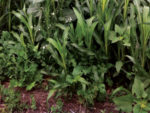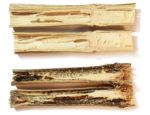Advertise Follow Us
No-Till Farmer

View Archived Issues
May 2022
Volume: 51
Edition: 5
Get full access NOW to the most comprehensive, powerful and easy-to-use online resource for no-tillage practices. Just one good idea will pay for your subscription hundreds of times over.
-
Table of Contents
Table of Contents
Digital Subscribers enjoy full access to No-Till Farmer's premium content. A paid subscription is required in order to read these stories.Are you a Premium or Digital subscriber? You enjoy:
- Unlimited access to all digital content here
- Freedom to view No-Till Farmer on all your devices
- Gleaning years of knowledge from the world's largest online library dedicated to no-till practices
Are you a Print only subscriber? Easily upgrade your subscription today! For only $10 more on a one year option, you gain the benefits of both the print edition delivered to your door and unlimited access to thousands of online pages of no-till content.
Crop, Animal Diversity Bring Stronger Soil & New Income Streams
By implementing the soil health principles, this South Dakota family is making plants and animals work together to improve the land while also protecting profitability.Read MoreNo-Till’s Herbicide History, Part I
No-till was a ‘no-go’ until modern weed-control chemicals arrived on the scene.Read MoreWhat I've Learned from No-TillingTransitioning a No-Till Legacy
Slashing fuel, doubling soil organic matter and retiring with pride were rewards for forging on in fringe no-till country.Read MoreAhead of the CurveComputer-Assisted Steering Helps Out In Tight Spots
Danfoss Power Solutions’ new MultiAxis-Steer technology is designed to boost maneuverability in tight corners and has fans in EU.Read MoreCommodity Classic Returns In-Person in New Orleans
Trade industry reps, farmers, scientists and government officials meet to present new policy and products and discuss the future of ag.Read MoreFeed Earthworms, Improve Yields By Chopping Residue
Veteran no-tiller Marion Calmer uses earthworms to manage residue in his Alpha, Ill., no-till system.Read MoreFuel or Fertilizer: Green Ammonia
A fledgling ammonia-for-fuel industry is sparking interest in an electrically powered, carbon-free infrastructure that could rewrite ledger books for anhydrous ammonia fertilizer.Read MoreHarvesting Residue Nutrients with New Biologicals
Using a biological product to break down crop residue can speed nutrient cycling, boost soil organic matter and save wear-and-tear on tires.Read MoreBody of Knowledge: Digging Into Noteworthy No-Till Literature — Plowman's Folly
While conservation ag principles are very much in the news these days, a look back at the no-till literature from the past reminds us that these important concepts are not new.Read More -
Featured Articles
Featured Articles
Crop, Animal Diversity Bring Stronger Soil & New Income Streams
By implementing the soil health principles, this South Dakota family is making plants and animals work together to improve the land while also protecting profitability.Read MoreNo-Till’s Herbicide History, Part I
No-till was a ‘no-go’ until modern weed-control chemicals arrived on the scene.Read More - Digital Edition
-
Online Extras
Online Extras















